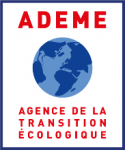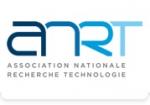Solid-State Electrolyte gels in Organic ElectroChemical Tansistors (OECTs)
| ABG-132780 | Stage master 2 / Ingénieur | 6 mois | 550 |
| 04/07/2025 |
- Electronique
Établissement recruteur
https://www.ims-bordeaux.fr/discover-ims-bordeaux/
Description
Organic electrochemical transistors (OECTs) are undergoing significant advancements for use in electronics and biological interfacing. Although substantial focus has been placed on the development of conjugated polymers that constitute the OECT channel, comparatively less attention has been directed towards the electrolytes that provide the ions for these devices. These electrolytes can be categorized into three main types: water-based solutions (such as NaCl, KCl, and phosphate-buffered solutions), room-temperature ionic liquids, and more complex mixtures with varying compositions. Water-based electrolytes generally yield high transconductance but low on/off ratios. Additionally, these electrolytes may experience evaporation, which can impair device performance and restrict their long-term viability. In contrast, ionic liquids, being free of water, can typically function at higher gate voltages, resulting in improved on/off ratios. Most high-performance OECTs reported to date utilize aqueous liquid electrolytes, which limits their practical applications. Therefore, the development of solid or semi-solid polymer electrolytes is essential for the future integration of OECTs into protected, flexible, printed, or conformable bioelectronic devices. Gel electrolytes are particularly promising, as they offer soft mechanical properties desirable for flexible devices and biological interfacing while mitigating the processing and leakage challenges associated with liquid electrolytes. The ionic conductivity of the gel is crucial as it influences the polarization response time of the channel, making it a key factor. However, solid electrolytes typically exhibit lower ionic conductivity compared to liquid electrolytes, leading to devices with slower switching responses.
To enhance properties such as conductivity and switching performance, we have developed a Gel (Plasticized) Polymer Electrolyte (GPE) system that comprises a ternary composition. Preliminary experiments have demonstrated the potential of our GPE system. Consequently, the primary objective of this research is to optimize the component ratios to maximize ionic conductivity and achieve an electrolyte with superior switching performance. Subsequently, natural gel electrolytes will be investigated to move towards fully biosourced and biodegradable devices.
Profil
We are looking for an engineering school/Master's student with solid knowledge of physics and (electro)chemistry. Good experimental/technological skills would be an additional asset.
Prise de fonction
Vous avez déjà un compte ?
Nouvel utilisateur ?
Vous souhaitez recevoir nos infolettres ?
Découvrez nos adhérents
 ADEME
ADEME  MabDesign
MabDesign  CASDEN
CASDEN  Tecknowmetrix
Tecknowmetrix  ASNR - Autorité de sûreté nucléaire et de radioprotection - Siège
ASNR - Autorité de sûreté nucléaire et de radioprotection - Siège  Nokia Bell Labs France
Nokia Bell Labs France  MabDesign
MabDesign  Laboratoire National de Métrologie et d'Essais - LNE
Laboratoire National de Métrologie et d'Essais - LNE  ANRT
ANRT  Généthon
Généthon  CESI
CESI  Institut Sup'biotech de Paris
Institut Sup'biotech de Paris  Aérocentre, Pôle d'excellence régional
Aérocentre, Pôle d'excellence régional  Ifremer
Ifremer  ONERA - The French Aerospace Lab
ONERA - The French Aerospace Lab  PhDOOC
PhDOOC  TotalEnergies
TotalEnergies  SUEZ
SUEZ  Groupe AFNOR - Association française de normalisation
Groupe AFNOR - Association française de normalisation




